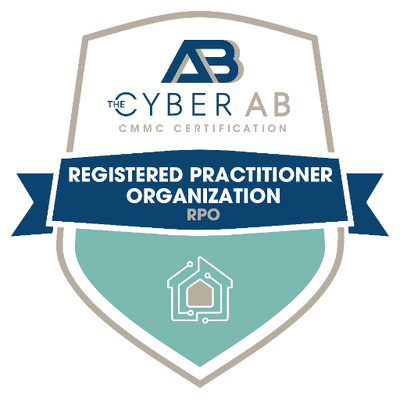The road to securing a Federal Risk and Authorization Management Program (FedRAMP) Authority to Operate (ATO) is long, winding, and riddled with requirements, pitfalls, and surprises.
The good news: There’s also a well-established FedRAMP requirements checklist to help your organization get ready.
As we walk you through this guide, keep in mind that preparation is not merely about mapping out steps and lining up deliverables. It’s just as important to understand the rationale behind each requisite — and how they add up to federal cloud security.
Consider this your informal FedRAMP requirements checklist: Use it as a guide to start familiarizing yourself with the necessary documents and processes.
Then when you’re ready to take the plunge, get in touch with 38North Security. We provide end-to-end FedRAMP guidance, documentation development, security engineering, and anything else you might need to get you through the process.
Before We Get Started
- While “FedRAMP authorization” is the official verbiage, it’s not entirely incorrect to use “FedRAMP certification” to refer to the process of achieving ATO. In other words, you won’t get points docked whichever phrasing you use.
- The documents described in this guide are part of the FedRAMP authorization package, which is the set of documents you’ll need to submit to obtain ATO, in order to demonstrate that your cloud service offering (CSO) meets security requirements.
- Be wary of any FedRAMP requirements checklist or authorization package checklist purporting to be thorough, comprehensive, or official. Requirements will vary between each cloud service provider (CSP).
- The Joint Authorization Board or JAB was the primary governing and decision-making body for FedRAMP. The Joint Authorization Board has since been replaced by the FedRAMP Board.
1. FedRAMP Authorization: There’s No Getting Around It
FedRAMP authorization is a mandatory requirement for CSPs seeking to provide cloud services to federal agencies. The authorization signifies that a CSP’s cloud service offering (CSO) meets the rigorous security standards required to handle federal data in cloud environments.
Why it matters: The FedRAMP ATO is a seal of approval that demonstrates a CSP’s commitment to security and compliance. Without this authorization, a CSP cannot offer its services to federal agencies.
2. System Security Plan (SSP)
The System Security Plan (SSP) is a comprehensive document that outlines the security controls implemented by the CSP. It details how these controls address the security requirements set forth by FedRAMP.
- What it’s for: The SSP serves as a blueprint for the security architecture of the CSP’s environment. It includes descriptions of the security controls, their implementation, and how they align with FedRAMP requirements.
- Why it matters: A well-documented system security plan is critical for the security assessment process. It provides the foundation for the Third Party Assessment Organization (3PAO) to evaluate the effectiveness of the security controls.
3. Security Assessment (SA)
Security Assessment (SA) is the process by which the 3PAO evaluates the CSP’s implementation of security controls. It includes a review of documentation, interviews with key personnel, and technical testing of the security controls.
- What it’s for: The SA is conducted to verify that the CSP’s security controls are functioning as intended and that they meet the FedRAMP requirements.
- Why it matters: A successful SA is crucial for achieving FedRAMP compliance. It demonstrates that the CSP has implemented effective security measures and that its environment is secure.
Learn more: What to Expect When You’re Expecting a FedRAMP 3PAO Assessment
4. Security Assessment Plan (SAP)
The Security Assessment Plan (SAP) is a document prepared by the 3PAO that outlines the approach, scope, and methodology for conducting the security assessment of the CSP’s environment. The SAP details the specific controls that will be tested, the assessment techniques to be used, and the schedule for the assessment activities.
- What it’s for: The SAP provides a clear roadmap for the security assessment, ensuring that the 3PAO and CSP are aligned on the assessment objectives and activities.
- Why it matters: A well-prepared SAP ensures that the assessment is thorough, consistent with FedRAMP requirements, and that all relevant security controls are properly evaluated. A clear SAP also helps to prevent misunderstandings and ensures that the assessment is completed on time.
5. Security Assessment Report (SAR)
The Security Assessment Report (SAR) is a document produced by the 3PAO after conducting a thorough security assessment of the CSP’s environment. The SAR details the findings of the assessment, including any vulnerabilities or weaknesses in the security controls.
- What it’s for: The security assessment report represents the culmination of assessment activities, substantiating whether the cloud offering has adequately implemented the mandatory security controls. It includes recommendations for remediation.
- Why it matters: The SAR is a critical document that influences the decision to grant or deny authorization. A favorable security assessment report indicates that the CSP has effectively implemented the necessary security controls.
Learn more: What is the FedRAMP Security Assessment Plan (SAP) and Security Assessment Report (SAR)?
6. Continuous Monitoring (ConMon)
Continuous Monitoring (ConMon) is an ongoing process that ensures the CSP’s environment remains secure after achieving FedRAMP authorization. ConMon involves regular security assessments, vulnerability scanning, and incident response activities.
- What it’s for: ConMon is designed to detect and address security issues as they arise, ensuring that the CSP’s environment remains compliant with FedRAMP requirements.
- Why it matters: Continuous monitoring ensures that security controls remain effective over time and that the CSP can quickly respond to emerging threats.
7. Plan of Action and Milestones (POA&M)
The Plan of Action and Milestones (POA&M) is a document that outlines the CSP’s plan for addressing any security vulnerabilities identified during the security assessment. The POA&M includes timelines for remediation and tracks the progress of these efforts.
- What it’s for: The POA&M helps ensure that security issues are addressed in a timely manner and that the CSP remains compliant with FedRAMP requirements.
- Why it matters: An effective POA&M is crucial for achieving and maintaining FedRAMP compliance. It demonstrates the CSP’s commitment to addressing security risks and improving its security posture.
Learn more: Here’s Why a Plan of Action and Milestones (POA&M) is Crucial to FedRAMP and CMMC Compliance
8. Third Party Assessment Organization (3PAO)
A Third Party Assessment Organization (3PAO) is an independent entity authorized by FedRAMP to conduct security assessments of CSPs. The 3PAO plays a key role in the FedRAMP certification process by evaluating the effectiveness of the CSP’s security controls.
- What it’s for: The 3PAO provides an objective, third-party evaluation of the CSP’s security posture, which is necessary for achieving a FedRAMP ATO.
- Why it matters: A positive assessment from a 3PAO is required for a CSP to achieve FedRAMP authorization.
Learn more: How to Choose the Right 3PAO to Partner With
9. Incident Response Plan (IRP)
The Incident Response Plan (IRP) outlines the procedures the CSP will follow in the event of a security incident. The plan includes steps for detecting, reporting, and responding to incidents, as well as post-incident activities such as root cause analysis and lessons learned.
- What it’s for: The IRP ensures that the CSP is prepared to respond to security incidents in a timely and effective manner, minimizing the impact on federal data.
- Why it matters: A well-prepared IRP ensures that the CSP can quickly and effectively address security incidents, protecting federal data from harm.
10. Configuration Management Plan (CMP)
The Configuration Management Plan (CMP) outlines the procedures for managing and controlling changes to the CSP’s environment. The plan includes processes for approving, implementing, and documenting changes, as well as mechanisms for tracking and auditing changes.
- What it’s for: The CMP ensures that changes to the CSP’s environment are properly managed and do not introduce new security risks.
- Why it matters: Effective configuration management helps ensure that the CSP’s environment remains secure and that unauthorized changes are prevented.
11. Risk Management Framework (RMF)
The Risk Management Framework (RMF) is a structured process for identifying, assessing, and mitigating risks to the CSP’s environment. The RMF includes steps for categorizing information systems, selecting and implementing security controls, and monitoring the effectiveness of these controls.
- What it’s for: The RMF provides a systematic approach to managing risks in the CSP’s environment, ensuring that security controls are aligned with the level of risk.
- Why it matters: A robust RMF helps the CSP identify and address risks, ensuring that its environment is secure and compliant with FedRAMP requirements.
12. Information Security Policies and Procedures
Information security policies and procedures are the formal documents that outline the CSP’s approach to security. These documents include policies on data protection, access control, incident response, and other key areas of security.
- What it’s for: Security policies and procedures provide the foundation for the CSP’s security program. They ensure that security practices are consistent and aligned with FedRAMP requirements.
- Why it matters: Well-documented security policies and procedures provide the guidance needed to implement and maintain effective security controls.
13. Access Control
Access control refers to the security measures used to restrict access to the CSP’s environment. This includes mechanisms for authenticating and authorizing users, as well as controls for monitoring and auditing access.
- What it’s for: Access control ensures that only authorized users have access to sensitive data and systems, reducing the risk of unauthorized access and data breaches.
- Why it matters: Strong access control measures help protect federal data from unauthorized access and ensure that the CSP’s environment is secure.
14. Vulnerability Management
Vulnerability management is the process of identifying, assessing, and mitigating vulnerabilities in the CSP’s environment. This includes regular vulnerability scanning, patch management, and the implementation of security controls to address identified vulnerabilities.
- What it’s for: Vulnerability management ensures that security weaknesses are identified and addressed before they can be exploited by attackers.
- Why it matters: Effective vulnerability management helps protect the CSP’s environment from security threats and ensures that vulnerabilities are promptly addressed.
15. Data Encryption
Data encryption is the process of converting data into a format that can only be read by authorized users. This includes both encryption of data at rest (stored data) and data in transit (data being transmitted).
- What it’s for: Encryption protects sensitive data from unauthorized access, ensuring that even if data is intercepted or accessed by unauthorized users, it cannot be read.
- Why it matters: Encryption helps protect federal data from unauthorized access and ensures the confidentiality of sensitive information.
16. Multi-Factor Authentication (MFA)
Multi-Factor Authentication (MFA) is a security measure that requires users to provide two or more forms of identification before gaining access to the CSP’s environment. This typically includes something the user knows (e.g., a password) and something the user has (e.g., a security token).
- What it’s for: MFA provides an additional layer of security, reducing the risk of unauthorized access by requiring multiple forms of authentication.
- Why it matters: Implementing MFA helps protect federal data from unauthorized access and ensures that only authorized users can access the CSP’s environment.
17. Audit Logging and Monitoring
Audit logging and monitoring involve the continuous recording and analysis of events in the CSP’s environment. This includes logging user activity, system events, and security incidents, as well as monitoring these logs for signs of suspicious activity.
- What it’s for: Audit logging and monitoring help detect and respond to security incidents, ensuring that any unauthorized access or activity is quickly identified and addressed.
- Why it matters: Effective audit logging and monitoring provide the visibility needed to detect and respond to security threats and ensure that the CSP’s environment is secure.
18. Security Awareness Training
Security awareness training is a program designed to educate the CSP’s personnel on security best practices and the importance of protecting federal data. This training covers topics such as phishing, password management, and incident response.
- What it’s for: Security awareness training ensures that all personnel understand their role in protecting the CSP’s environment and the importance of following security policies and procedures.
- Why it matters: A well-trained workforce helps reduce the risk of human error and ensures that personnel are prepared to respond to security incidents.
19. Data Backup and Recovery
Data backup and recovery involve the regular creation of copies of critical data and systems, as well as the implementation of procedures for restoring this data in the event of a disaster or security incident.
- What it’s for: Data backup and recovery ensure that the CSP can quickly recover from data loss or system failures, minimizing downtime and the impact on federal agencies.
- Why it matters: A robust data backup and recovery plan helps ensure the availability of federal data and the resilience of the CSP’s environment.
20. Physical Security
Physical security refers to the measures implemented to protect the CSP’s facilities and equipment from physical threats, such as unauthorized access, theft, and natural disasters.
- What it’s for: Physical security ensures that the CSP’s environment is protected from physical threats, reducing the risk of unauthorized access and damage to critical infrastructure.
- Why it matters: Strong physical security measures help protect the CSP’s environment from physical threats and ensure the availability and integrity of federal data.
Learn more: Cybersecurity Gets Physical: Tips for Selecting the Best Datacenter Partner
21. Authorization Boundary
The Authorization Boundary defines the scope of the system that is being assessed and authorized under FedRAMP. It includes all components, services, and interconnections that fall within the system’s security controls.
- What it’s for: The Authorization Boundary helps establish the limits of the system’s security responsibilities, clarifying what is included in the assessment and what is not.
- Why it matters: Clearly defining the Authorization Boundary ensures that all relevant components are covered by security controls, reducing the risk of gaps in security.
Learn more: Why You Need a FedRAMP-Friendly Dev Environment
22. Data Flow Diagrams (DFDs)
Data Flow Diagrams (DFDs) visually represent the flow of data within the CSP’s environment, showing how data moves between components, systems, and external entities. DFDs help illustrate the interactions and dependencies between different parts of the system.
- What it’s for: DFDs provide a clear understanding of how data is processed, transmitted, and stored within the system, which is crucial for identifying potential security risks.
- Why it matters: DFDs help identify points of vulnerability and ensure that data is adequately protected throughout its lifecycle.
23. Security Incident Reporting
Security incident reporting involves the process of notifying the appropriate parties, including the FedRAMP Program Management Office (PMO) and affected federal agencies, of any security incidents that occur in the CSP’s environment.
- What it’s for: Incident reporting ensures that federal agencies are aware of any security incidents that may affect their data and that the cloud service provider can respond to these incidents in a timely and coordinated manner.
- Why it matters: Prompt and accurate incident reporting helps protect federal data and ensures that any security incidents are addressed quickly and effectively.
24. Achieving and Maintaining FedRAMP Compliance
Achieving FedRAMP compliance is just the beginning. Once your cloud services have achieved an ATO, it must continue to meet FedRAMP requirements through ongoing compliance activities, including continuous monitoring, security assessments, and updates to the authorization package.
- What it’s for: Ongoing compliance ensures that the CSP’s environment remains secure and that it continues to meet the requirements for a FedRAMP ATO.
- Why it matters: Maintaining FedRAMP compliance is essential for retaining authorization and continuing to provide services to federal agencies. It demonstrates the CSP’s commitment to security and its ability to protect federal data over time.
25. Business Impact Analysis (BIA)
A Business Impact Analysis (BIA) is a systematic process to evaluate the potential effects of a disruption to the CSP’s operations and services. The BIA identifies critical functions, determines their dependencies, and assesses the potential impact of disruptions.
- What it’s for: The BIA helps the CSP understand the significance of different assets and operations, enabling prioritization during recovery efforts and ensuring that the most critical services are restored first.
- Why it matters: Conducting a BIA informs the development of contingency plans and disaster recovery strategies, ensuring the CSP can quickly recover from incidents and continue to meet its obligations to federal agencies.
26. Contingency Plan Test (CPT)
The Contingency Plan Test (CPT) involves testing the CSP’s contingency plans to ensure they are effective and that the organization is prepared to respond to various types of disruptions. This can include tabletop exercises, full-scale simulations, and other testing methods.
- What it’s for: The CPT verifies that the CSP’s contingency plans are practical, that all necessary personnel are trained, and that the organization can recover from significant disruptions.
- Why it matters: Regularly testing contingency plans ensures that the CSP can maintain continuity of operations and protect federal data during emergencies.
27. Incident Response Plan Test (IRPT)
The Incident Response Plan Test (IRPT) involves testing the CSP’s incident response procedures to ensure they are effective in the event of a security breach or other incident. The test evaluates the organization’s ability to detect, respond to, and recover from incidents.
- What it’s for: The IRPT ensures that the incident response team is familiar with their roles and that the procedures are effective in mitigating the impact of incidents.
- Why it matters: Testing the Incident Response Plan ensures that the CSP can respond swiftly and effectively to security incidents, minimizing damage and protecting federal data.
Conclusion
The process to achieve FedRAMP compliance is complex, but far from unknowable. Again, while this should not be considered a comprehensive list of processes or checklist for building your authorization package, it’s a good place to start setting expectations.
Learning as much as you can goes a long way towards success, as does partnering with experienced FedRAMP advisors. Get in touch with 38North Security for comprehensive guidance. We provide clarity and an actionable path towards accomplishing FedRAMP goals.





